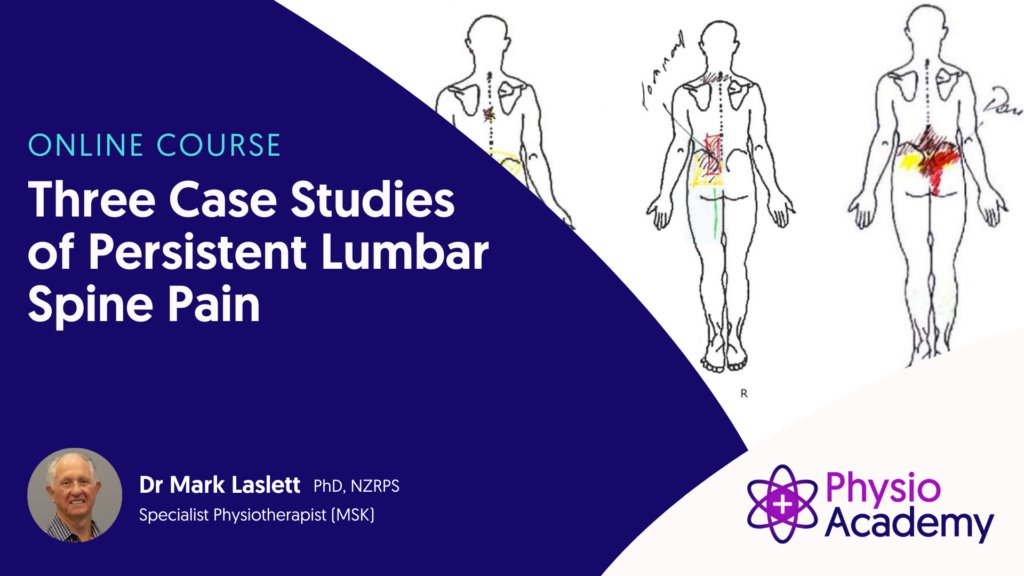This course presents case studies of three patients seen by Mark Laslett. All have over 2 years of persistent lumbosacral pain and all have had previous unsuccessful treatment. Two cases have clinical diagnoses that were available on the basis of the initial clinical assessment finding. The other case has a clinical diagnosis that is unconfirmed but unneeded for management.
Chapters
1. Introduction
2. Ian. 54 year old salesman with 8 years of persistent central low back pain with daily severe immobilising twinges and intolerance to prolonged sitting
3. Rosie. 18 year old athlete with 2 years of dominant buttock pain interrupting professional basketball career.
4. Tom. 32 year old electrician with 8 years of persistent unilateral low back pain causing him to change occupations three times.
5. Concluding commentary
The three cases have consented to the assessments and follow ups being videoed for educational purposes. In the clinical assessments video was running continuously and has been edited to remove unnecessary dialog. Captions and annotations added to improve detail and clarity.
Learning activities:
1. The history, the physical examination and follow up consultations are presented as separate video presentations.
2. Each case has depersonalized case notes in the form of letters, imaging, and reports. Follow ups are more 12 months.
3. Reading case notes online and in the course manual.
Study time: Three hours of video. 1-2 hours of reading case notes
Learning Outcomes:
1. Demonstrate 3 different patho-anatomic subsets of non-specific low back pain may be identified by clinical assessment and clinical reasoning
2. Demonstrate the clinical assessment used in the consultations
3. Demonstrate appropriate use of and referral for confirmation by reference standard diagnostic procedures
4. Demonstrate that clinical pathoanatomic diagnosis is necessary in persistent pain so that on-going management and appropriate treatment may be determined.
**Please use your username and password that you created to register for this course to access the online material


